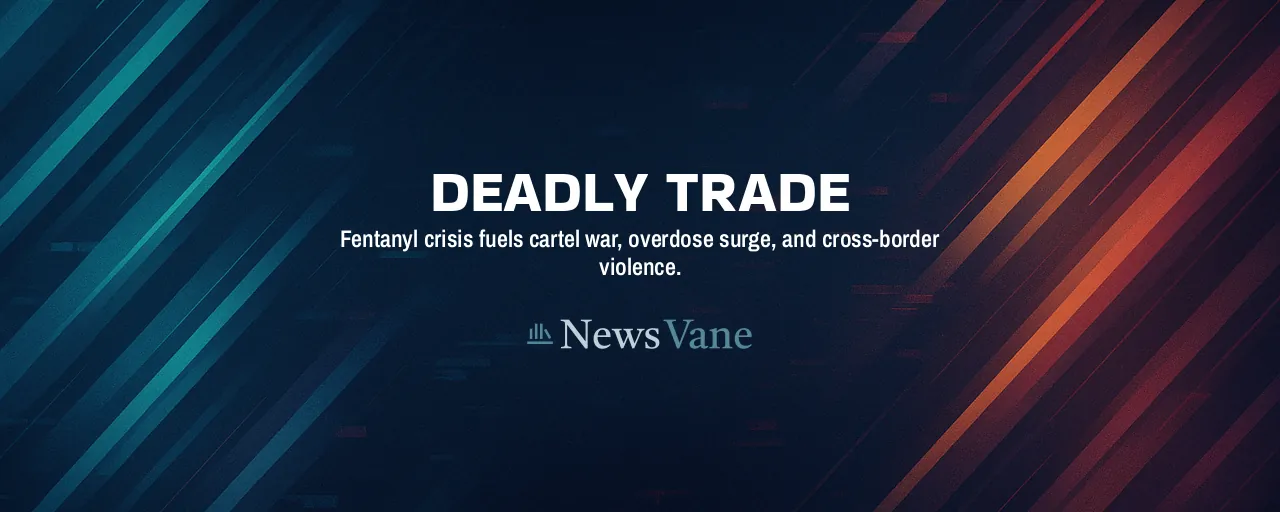A Deadly Trade Takes Hold
Fentanyl, a synthetic opioid far more potent than heroin, has become a scourge across the United States, driving over 102,000 overdose deaths in 2024, according to the Centers for Disease Control and Prevention. Often disguised in fake pills, it crosses the U.S.-Mexico border through sophisticated criminal networks. On June 9, 2025, the U.S. Department of the Treasury targeted one such network, sanctioning Los Chapitos, a powerful faction of Mexico's Sinaloa Cartel, for its central role in this deadly trade.
Led by the sons of jailed cartel boss Joaquín 'El Chapo' Guzmán, Los Chapitos has solidified its grip on fentanyl production and smuggling. The Treasury's Office of Foreign Assets Control (OFAC) named two fugitive leaders, Archivaldo Ivan Guzman Salazar and Jesus Alfredo Guzman Salazar, along with a network of associates and businesses in Mazatlán, Mexico. With $10 million rewards offered by the State Department for the brothers' capture, the U.S. aims to dismantle their operations.
The fentanyl crisis, however, extends beyond crime. It intertwines with addiction, economic hardship, and spiraling violence in Mexico. As the U.S. escalates its response, many wonder if sanctions and seizures can address the deeper forces fueling this epidemic.
The U.S. Fights Back
The Treasury's sanctions block Los Chapitos' access to U.S. assets and prohibit American dealings with them. The measures also target a Mazatlán-based group linked to drug trafficking, kidnapping, and money laundering. Ten businesses, including real estate and hospitality firms, were designated for allegedly laundering cartel profits, with individuals like Jose Raul Nunez Rios and his wife, Sheila Paola Urias Vazquez, identified as key figures.
This effort fits into a larger U.S. strategy. In February 2025, the State Department labeled the Sinaloa Cartel a Foreign Terrorist Organization, enabling broader counterterrorism powers. The Drug Enforcement Administration (DEA) has ramped up operations, confiscating over 2,000 kilograms of fentanyl from Sinaloa labs since June. Recent moves to disrupt precursor chemical supplies from China and India have closed 35 suppliers in three months, targeting the trade's roots.
Sanctions, while impactful, face hurdles. Studies indicate they can squeeze cartel finances; cartels launder roughly $300 billion annually, but often redirect funds to unregulated markets or cryptocurrencies. Experts stress that without robust global partnerships, cartels find ways to adapt.
Bloodshed in Sinaloa
In Mexico, Los Chapitos' ascent has unleashed havoc. Since September 2024, clashes with rival factions have left over 600 dead in Sinaloa, with violence spreading to Durango and Sonora. The group's control over clandestine fentanyl labs, protected by drones and rural hideouts, has bolstered its power. Tensions with the cartel's El Mayo Zambada faction have only intensified the carnage.
The murder of former U.S. Marine Nicholas Quets in Sonora on October 18, 2024, linked to Sinaloa gunmen, highlights the crisis's reach. This violence strains U.S.-Mexico cooperation, as corruption and weak local governance complicate efforts to curb the cartels.
A Public Health Battle
In the U.S., fentanyl's impact is devastating. Emergency rooms have seen a 28 percent rise in synthetic opioid overdoses among young adults, with rural areas facing triple the national overdose rate. Tribal communities in the Midwest report a 35 percent increase in fentanyl-related deaths, spurring targeted federal programs. The crisis costs $125 billion annually in healthcare and lost productivity.
Advocates for public health solutions emphasize prevention and treatment. Naloxone distribution and medication-assisted therapies have saved countless lives. Pilot programs in Ohio and Massachusetts, combining safe consumption sites with peer support, have cut overdose deaths by 22 percent, focusing on addiction's ties to poverty and trauma.
Charting a Way Forward
The U.S. blends enforcement with public health initiatives, but the path is fraught. Sanctions and raids disrupt cartel networks, yet their resilience calls for more than U.S.-led action. Deepening ties with Mexico and supplier nations like China could help, though diplomatic challenges persist.
At home, expanding treatment and prevention programs offers hope. Federal grants of $1.5 billion support community efforts to reduce overdoses and address socioeconomic factors. Coordinating these with supply-side measures demands long-term commitment and resources.
Fentanyl's grip tests governments and communities alike. As the U.S. confronts Los Chapitos and the broader crisis, success hinges on balancing disruption of the trade with compassion for those caught in its web.
